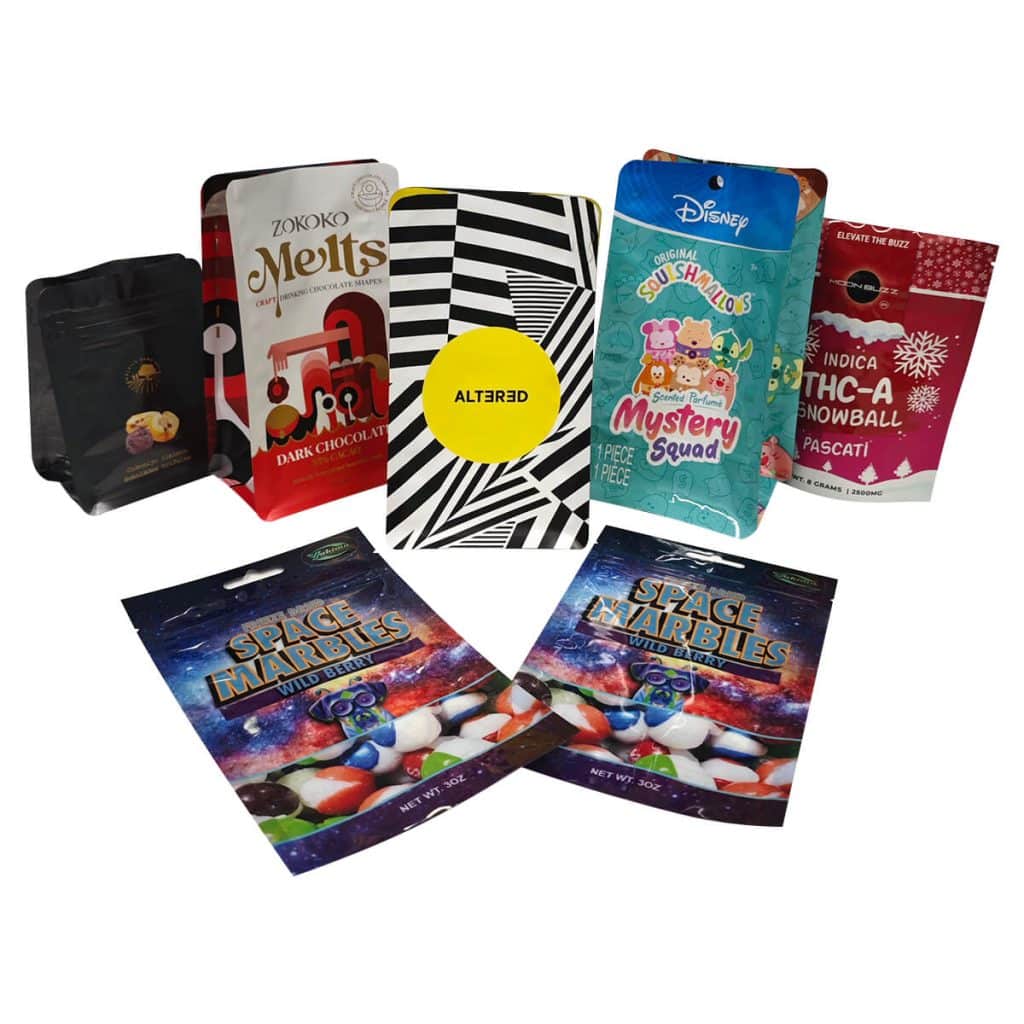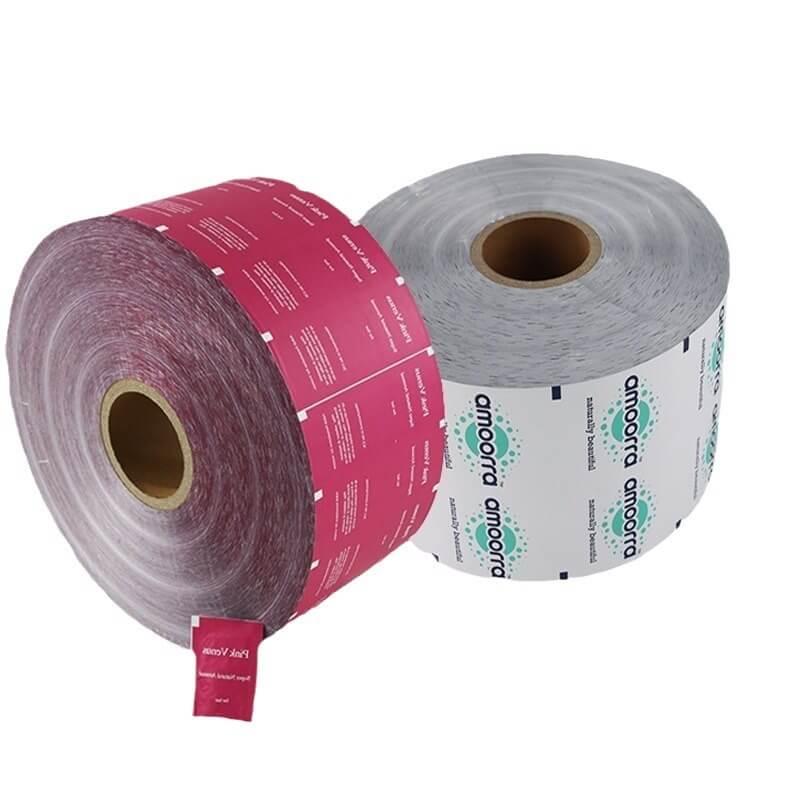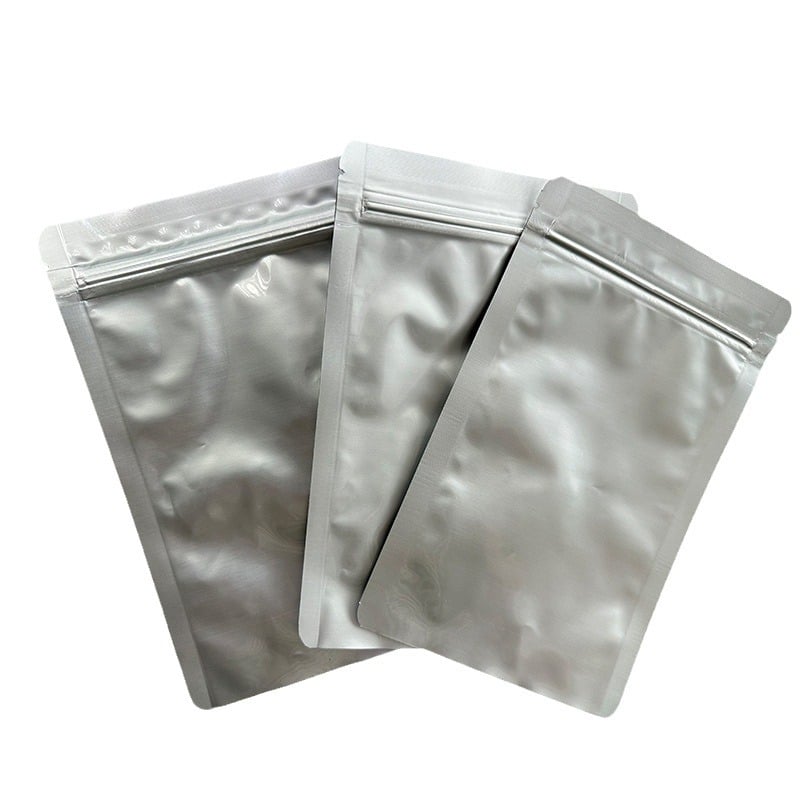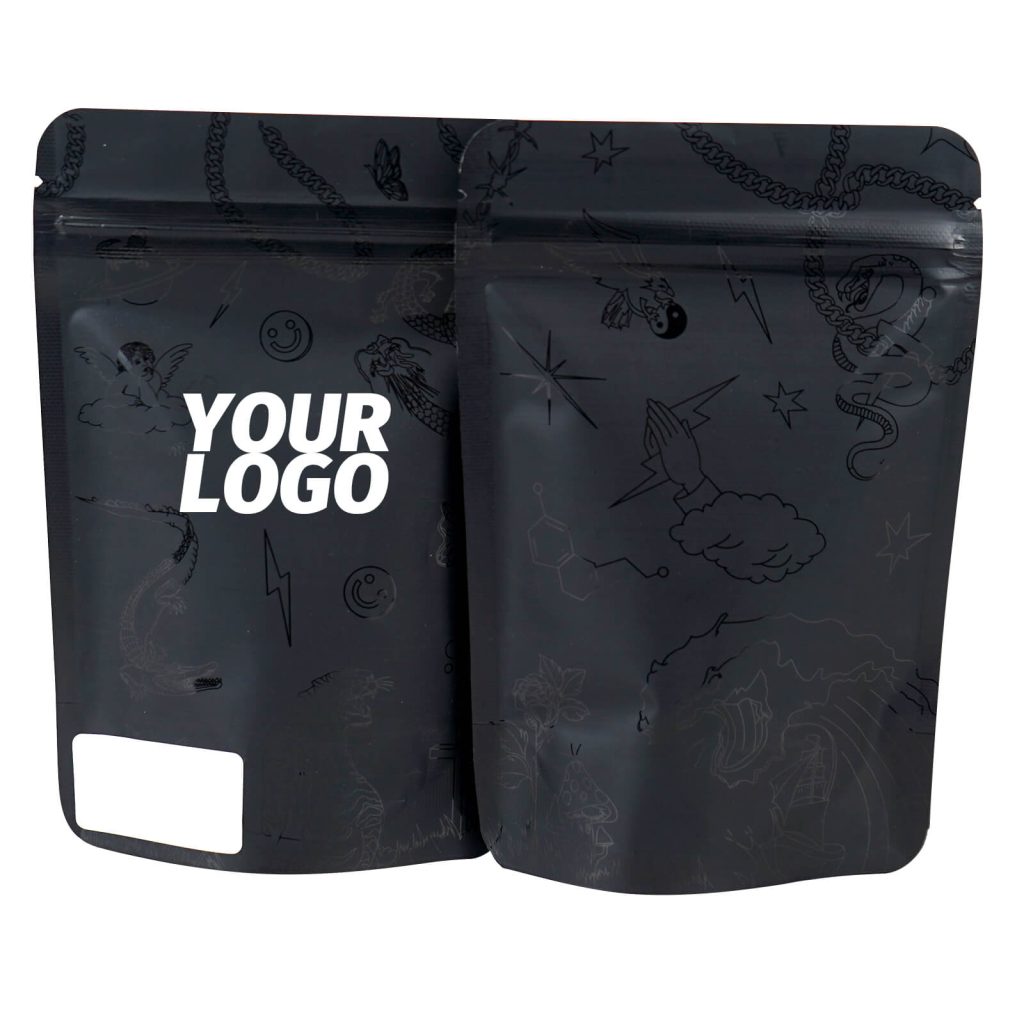Stick pack vs. sachet packaging: terminology and design differences
Stick packs and sachets are popular single-dose packaging options, although they serve different functions. Here are their designs, materials, and best uses:
What is a Stick Pack?
A stick pack is a small, elongated tube optimized for single-serve portions. Its main features:
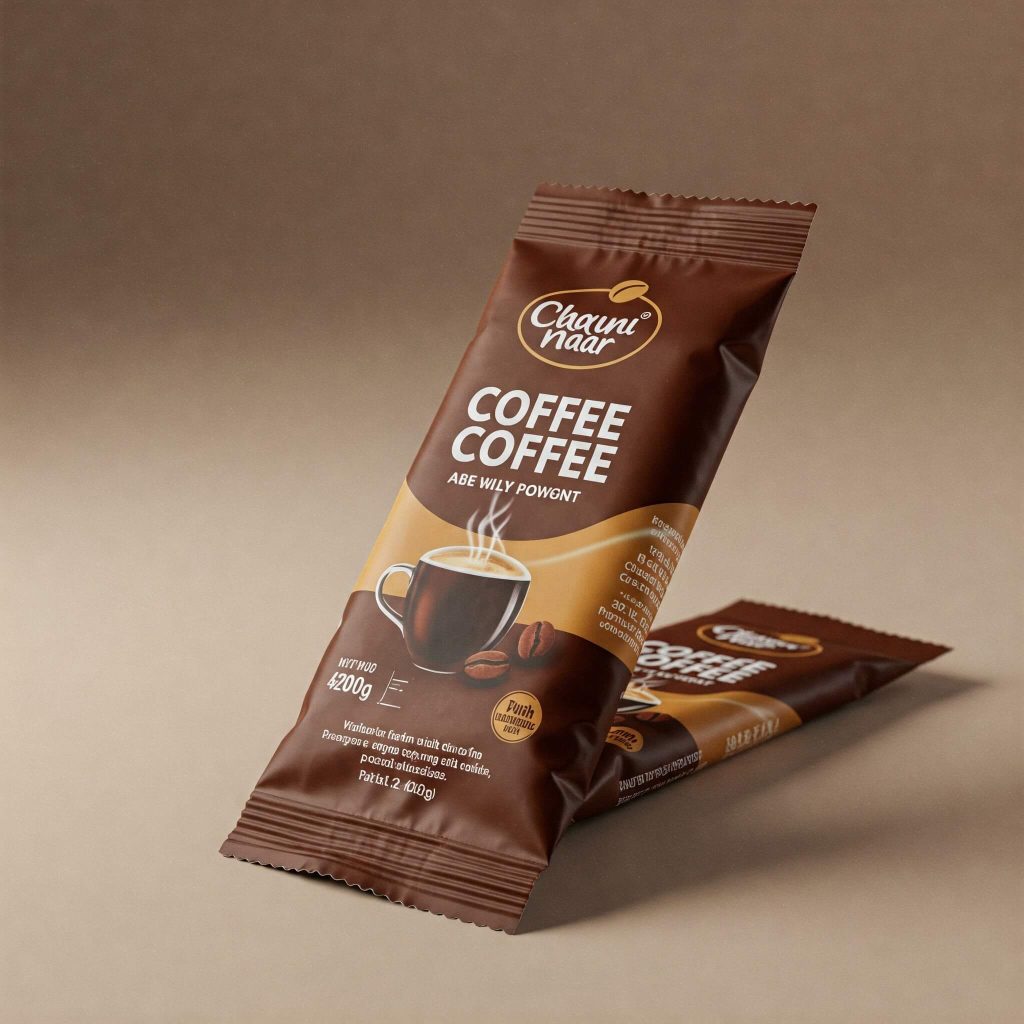
Shape: Long, slender (40-200 mm), like a tube or stick.
Sealed on both sides (top and bottom) with a tear tab for simple opening.
Materials: Plastic, foil, or multi-layer laminates help protect contents from moisture, light, and air.
Common Uses: It is perfect for instant coffee, protein powders, sugar, salt granules, and liquids (nutritional supplements, flavoured syrups).
Industry Data: Stick packs, popular for on-the-go products like energy drinks and travel-size toiletries, hold 1-60 ml of liquid or several grams of powder .
What is a Sachet?
Sachets are flat, rectangular pouches designed for versatility and security.

The shape is wide and compact, with a three- or four-sided seal for optimal airtightness.
Materials: Made from foil, plastic, or strong laminate films to maintain freshness.
Common Uses: It is ideal for liquids (soy sauce, shampoo), creams (facial masks), and single-use goods.
Industry Data: Sachets can hold 1-10 ml of liquid or higher powder quantities (e.g., seasoning blends). These are commonly used in the food and pharmaceutical industries for durable packaging .
Key Design Differences
| Feature | Stick Pack | Sachet |
| Seal Strength | 2-sided seal (less secure for fragile items) | 3–4 sided seal (ideal for liquids/sensitive products) |
| Portability | Lightweight and pocket-friendly | Bulkier but still portable |
| Material Usage | Less material (more sustainable) | More material (varies by product) |
| Printing Space | Limited to narrow surfaces | Larger surface area for branding |
Why Choose One Over the Other?
Stick Packs excel in precision dosing (e.g., medication) and are cost-effective for high-speed production.
Sachets prioritize versatility and are often cheaper for bulk manufacturing, though they generate more waste.
Key differences between stick packs and Sachet
Volume/Capacity of Stick Pack and Sachet
Stick packs are great for single-serve quantities like coffee pods or protein shakes, as they store 1-60ml of liquids or grams of dry powders. Although sachets are meant for smaller liquid capacities (1-10ml), they can store higher powder quantities (e.g., 50-200g for soy sauce or spices).
One stick pack can hold 50ml of iced tea mix, whereas a sachet can hold 100g of chilli flakes (Taylor Packaging Blog).
Industry Insight: Stick packs are preferred in the global single-dose packaging market for their precision and ability to be transported, with 68% of beverage companies adopting them (Statista, 2023).
Seal Strength & Durability of Stick Pack and Sachet
Stick packs feature a two-sided seal, making them lightweight but less secure for delicate products like creams. Sachets with three- or four-sided sealing provide a tighter barrier for moisture-sensitive items like coffee and tea.
Compared to standard plastic bags, sachets limit oxygen exposure by 95% and prolong shelf life by up to 6 months (Mentpack Technical Guide).
The use case is that coffee sachets with four-sided sealing last three months, and powdered supplement stick packets are generally resealable (HonorPack Resources).
Cost and production efficiency of stick packs and Sachet
Stick packs require specialized technology (e.g., vertical form-fill-seal machines), leading to a 20-30% increase in initial expenditures. Thanks to simpler horizontal equipment, cheaper sachet production results in up to 40% savings in bulk manufacture.
Production Speed: Sachet lines can manufacture 1,000 units/hour, while stick packs average 600 units/hour due to sophisticated sealing processes (source: Vertical Packaging Machinery Handbook).
A 10,000-unit batch of stick packs costs around 500-700, whereas sachets cost around 300-450 (source: CarePac Cost Analysis).
H3: Application Industries Stick packs are more common in pharmaceuticals and instant beverages, while sachets are preferred in food condiments and household items.
Pharma Example: Seventy per cent of liquid vitamins now use stick packets for portability (source: Pharmaceutical Packaging News).
Food Trend: Southeast Asia’s fast-food sector uses 65% of sachets for single-use sauce packaging (Food Packaging Alliance Report).
Stick Pack vs. Sachet Packaging: Pros and Cons
Choose stick packs or sachets to meet your product’s needs based on their strengths and limitations. A clear breakdown:
Stick Pack Advantages
Highly portable and user-friendly. Slim and lightweight design fits effortlessly in bags, pockets, or travel packages.
One stick pack of instant coffee weighs 5-10 grams, making it suitable for hikers (source: HonorPack).
Highly accurate dosing
Designed for precise measurements (5ml cough syrup, 10g protein powder).
Industry Data: Compared to bulk containers, stick packs reduce drug dosing errors by 30% (source: Pharmaceutical Packaging News).
Reduced Packaging Waste per Unit Uses 30-50% less plastic than sachets for the same volume (Mentpack Sustainability Report).
Drawbacks of Stick Packs
Limited to Dry/Powder Products Problems with liquids, creams, or fragile items without proper sealing.
Stick packs with multi-layer sheets for liquids incur a 25% cost increase (source: Vertical Packaging Machinery Handbook).
Higher Cost for Small Batches Specialized machinery, such as vertical form-fill-seal machines, demands initial investment.
Comparison of Costs: A 1,000-unit stick pack batch costs 0.50–0.75/unit, whereas sachets cost 0.30–0.45/unit (CarePac Pricing Guide).
Benefits of Sachet Versatility for Liquids, Creams, and Gels Protects yoghurt, shampoo, and skincare products from leaks.
For instance, sachets dominate the $15 billion worldwide single-use sauce industry due to their leak-proof design (Food Packaging Alliance Report).
Cost-effective for large-scale production: Horizontal packaging machines can manufacture 1,000-2,000 sachets per hour, reducing costs by 40% compared to stick packs (Taylor Packaging Blog).
Improved Branding Space Full-color logos, recipes, and instructions are possible with a larger surface area.
Research indicates that branded sachets increase consumer recall by 20% (Lintyco Marketing Study).
Sachet Drawbacks
Less portable, Bulkier shapes require more space in luggage and store displays.
Example: According to the CarePac Size Chart, a 100g peanut butter sachet measures 120x80mm, while a stick pack of the same weight measures 40x100mm.
The Environmental Impact This product produces 15-20% more plastic waste per gram than stick packs.
Sustainability Tip: Use compostable sheets (e.g., PLA) to minimize your footprint by 60% (Mentpack Green Packaging Guide).
Final Verdict Consider Stick Packs for portability, precision, and sustainability (e.g., medications, travel munchies).
Select sachets for liquid items, cost-effectiveness, and branding (e.g., sauces, single-use cosmetics).
Top Use Cases for Stick Pack and Sachet Packaging
Understanding the optimum use cases is crucial when choosing between stick packs and sachets. Each excels in these areas:
Ideal for Stick Packs
Top Use Cases for Stick Pack and Sachet Packaging
Understanding the optimum use cases is crucial when choosing between stick packs and sachets. Each excels in these areas:
Ideal for Stick Packs
1 .Single-Serve Medications
- Examples include pills, powdered vitamins, and pre-measured liquid antibiotics.
- Why? Stick packs provide precise dosing and portability for patients on the road.
- According to Pharmaceutical Packaging News, stick packs are currently used in 70% of liquid pharmaceuticals to decrease spillage and enhance compliance.
2. Instant Beverages
- Example: Coffee, tea, protein smoothies, or electrolyte powders.
- Why? These stick packs fit snugly in cups or bottles and have leak-proof sealing for travel.
- The global instant coffee market uses stick packs for 68% of single-serve packaging due to convenience (Statista 2023).
3 .Travel-Friendly Snacks/Supplements
- For example: packaging for ketchup, soy sauce, salad dressing or hot sauce.
- Why? Lightweight and small, stick packs are TSA-friendly and stack well in carry-ons.
- Trend: Travel-size stick pack sales increased by 25% in 2023 (GlobalData Consumer Trends Report).
Ideal for Sachets
1 .Condiments & Sauces
- Example: Ketchup, soy sauce, salad dressing, or hot sauce.
- Why? Sachets’ leak-proof sealing and flat design make them ideal for restaurants and retail environments.
- 65% of Asia-Pacific fast-food chains utilize sauce sachets to reduce costs and waste (source: Food Packaging Alliance).
2. Two Cosmetics Samples
- Examples include serum samples, face creams, and shampoo pods.
- Why? More space on sachets provides for branding and product information, increasing consumer involvement.
- According to Lintyco Marketing Study, 80% of luxury skincare manufacturers utilize sachets for travel kits and promotions.
3. Household Products
- Example: Detergent pods, dish soap, or fabric softener.
- Why? Sachets’ robust seals safeguard liquids and powders during shipping, while its single-use shape attracts eco-conscious consumers.
- The global detergent pod market is expected to expand to $15 billion by 2028, led by sachet use (Grand View Research).
Key Industry Trends
Stick Packs: Popular in pharmaceuticals (e.g., pediatric meds) and health foods (e.g., collagen powders).
Sachets dominate on-the-go food and single-use personal care products worldwide.
Stick Pack and Sachet Packaging: Selection Criteria
The selection of stick packs or sachets relies on the product’s needs, budget, and sustainability goals. Advice to help you choose:
Quick Summary
Stick Packs: Ideal for dry powders, precise dosing, and premium branding (e.g., pharmaceuticals, instant coffee).
Sachets are ideal for liquids/gels, high-volume production, and cost-effective single-use packaging (e.g., shampoo).
Product-Specific Factors
1 .Dosage Precision
- Stick Packs: Excel for precise measurements (e.g., 10ml liquid medicine or 20g protein powder).
- Industry data indicates that stick packs can reduce pharmaceutical dosing errors by 30% (source: Pharmaceutical Packaging News).
- Sachets: Ideal for free-flowing liquids, less precise for powders.
2. Product Status
- Stick Packs: Ideal for dry powders (coffee, vitamins), small liquids (1-60ml), or semi-solids (yogurt).
- Sachets are useful for liquids (1-10ml), creams, gels, and sauces (e.g., ketchup, detergent pods).
- For instance, sachets dominate the $15 billion global sauce business due to leak-proof sealing (Food Packaging Alliance).
Business Priorities
1. Budget
- Sachets are 40% cheaper than stick packs for high-volume manufacture.
- According to CarePac Pricing Guide, a 10,000-unit batch of sachets costs 0.30–0.45/unit, whereas stick packs cost 0.50–0.75/unit.
- Stick packs come with higher upfront expenditures for specialist equipment, but are ideal for premium branding (e.g., luxury supplements).
2 .Production Speed
- Sachets: Produced faster (up to 2,000 units/hour) on horizontal or vertical machines.
- Stick Pack production is slower (up to 600 units/hour) due to difficult sealing requirements.
Sustainability Goals
1. Material Efficiency
- Stick packs use 30-50% less plastic per unit than sachets, making them more eco-friendly.
- For instance, a stick pack of coffee uses 2g of foil, while a sachet uses 3-4g (Mentpack Sustainability Report).
- Sachets: Increase trash, however switching to recyclable foils (e.g., PLA-coated sheets) can lessen environmental impact.
2. Recycling Options
- Stick Packs: Multi-layer materials make recycling challenging, although mono-material advances are improving.
- Unilever has adopted 100% recyclable sachets for detergents (source: Unilever Sustainable Living Plan).
Final Advice
Consider Stick Packs for precision, portability, and sustainability (e.g., medications, travel munchies).
Select sachets for liquid items, cost efficiency, and widespread distribution (e.g., sauces, single-use cosmetics).
Future trends in stick packs and sachets
As consumer preferences and environmental concerns change, stick packs and sachets adjust to suit new demands. A preview of their inventive future:
Sustainable Innovations
Both formats are adopting greener solutions:
1. Compostable Materials: Brands are switching from plastic to plant-based films (e.g., PLA, PHA) that degrade organically. Nestlé’s Nespresso coffee now employs 90% biodegradable stick packs (source: Nestlé Sustainability Report).
Reduce waste with
2 .Micro-Packs are smaller single-serve packages. The global micro-packaging industry is expected to expand 8.2% annually until 2028 (Statista 2024).
3.Recycled Content: Unilever pioneers 100% recycled foil sachets, reducing emissions by 30% (Unilever Circular Economy Report).
Technological Advancements
Innovation improves efficiency and functionality:
1. Smart Packaging: QR codes and NFC tags provide real-time tracking and product verification. For example, GSK uses QR codes in stick packets to check drug legitimacy (source: GSK Packaging Innovation).
2. Automated Production: Hybrid machines now mix stick pack and sachet capabilities. Mentpack’s FlexiLine increases output by 30% through reduced material waste (source: Mentpack Technical Guide).
3.Active Packaging: Moisture-absorbing sachets boost shelf life by 40% in humid conditions (source: Packaging Digest).
The Key Drivers
According to a Nielsen Global Survey, 73% of consumers value brands that prioritize eco-friendly packaging.
Tech Integration: Food and pharma sectors are adopting innovative packaging at a rate of 15% annually (GlobalData Report).
Conclusion
Stick Pack vs Sachet Packaging: Final Comparison & Recommendation
Stick packs and sachets are both single-dose solutions, but they differ significantly in design, function, and purpose:
Form: Stick packs are narrow tubes (40–200mm); sachets are flat pouches (1:1 to 3:4 aspect ratio).
Capacity: Stick packs hold 1–60ml liquids or multi-gram powders; sachets max out at 10ml liquids but excel with larger powder quantities.
Cost: Sachets are cheaper for bulk production (up to 40% lower cost); stick packs require specialized machinery.
Sustainability: Stick packs use 30–50% less plastic per unit, while sachets lag behind but offer recyclable foil options (source: Mentpack Sustainability Report).
Final Recommendation
Choose stick packs if your priority is precision dosing (e.g., medications), portability (travel snacks), or pharmaceutical-grade packaging.
Choose sachets for liquid products (soy sauce, shampoo), cost-effective mass production, or strong branding space.
For example:
A stick pack of instant coffee (50ml) reduces waste by 40% vs. a bottle (source: HonorPack).
A sachet of detergent costs 30% less per unit than a

